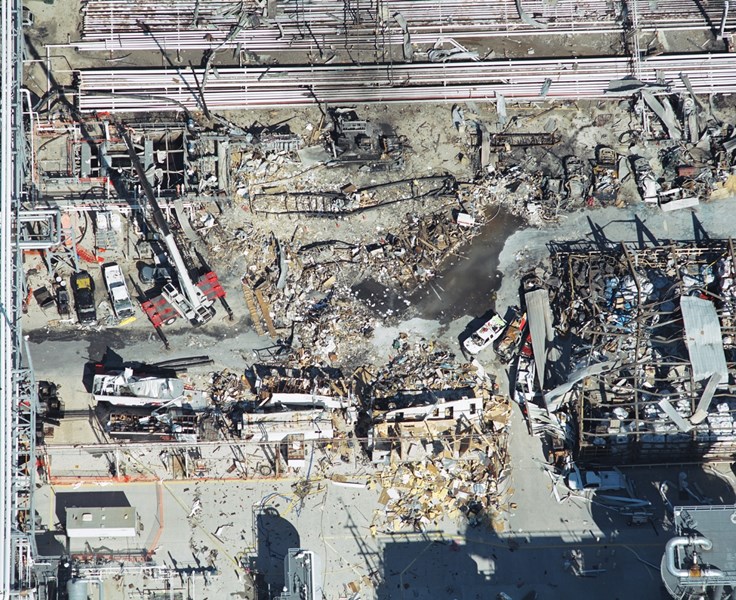Combustible dust standard identified as ‘Most Wanted’
CSB Business Meeting to Vote on Key Safety Recommendations and Initiate "Most Wanted" Program - Public Meeting - Events | the U.S. Chemical Safety Board
The U.S. Chemical Safety Board will meet publicly to consider the status designations of seven key safety recommendations issued to the federal Occupational Safety and Health Administration (OSHA.) The Board will also consider selection of the agency's first "Most Wanted Safety Improvement."
PLACE: Ronald Reagan Building and International Trade Center, Horizon Room, 1300 Pennsylvania Avenue
Press Release: "CSB Announces Public Meeting in Washington to Vote on Key Safety Recommendations and Initiate Most Wanted Program" (July 15, 2013)
Meeting Agenda (Coming Soon!)
Summaries of staff evaluations to be presented
Frequently Asked Questions about the CSB's Recommendations
Thursday, July 25, 2013
CSB Business Meeting to Vote on Key Safety Recommendations and Initiate "Most Wanted" Program
All Day EventThe U.S. Chemical Safety Board will meet publicly to consider the status designations of seven key safety recommendations issued to the federal Occupational Safety and Health Administration (OSHA.) The Board will also consider selection of the agency's first "Most Wanted Safety Improvement."
TIME AND DATE: July 25, 2013, 9:30 a.m.- 4:30 p.m. EDT.
PLACE: Ronald Reagan Building and International Trade Center, Horizon Room, 1300 Pennsylvania Avenue  N.W., Washington, DC 20004.
N.W., Washington, DC 20004.
OVERVIEW OF ACTIVITIES:
From 9:30 a.m. until 12:15 p.m., the Board will consider designating the following recommendations to the federal Occupational Safety and Health Administration (OSHA) with the status "Open- Unacceptable Response":- Recommendation No. 2001-05-I-DE-R1: This recommendation calls upon OSHA to ensure coverage under the Process Safety Management (PSM) standard, at 29 CFR 1910.119, for atmospheric storage tanks that could be involved in a potential catastrophic release as a result of being interconnected to a covered process with 10,000 pounds of a flammable substance. This recommendation was issued pursuant to the CSB's investigation of the 2001 atmospheric tank explosion at the Motiva Delaware City Refinery.
- Recommendation No. 2005-04-I-TX-R9: This recommendation calls upon OSHA to revise the PSM standard to require management of change reviews for organizational changes (e.g. mergers, acquisitions) that could impact process safety. This recommendation was issued pursuant to the CSB's investigation of the March 2005 BP Texas City Refinery Fire and Explosion.
- Recommendation No. 2010-07-I-CT-UR1: This recommendation calls upon OSHA to issue a fuel gas safety standard for both general industry and construction. This recommendation was issued pursuant to the CSB's investigations of the February 2010 incident at Kleen Energy in Middletown, CT, and the June 2009 explosion and ammonia release at ConAgra in Garner, NC.
- Recommendation No. 2006-1-H-R1, issued pursuant to the CSB's Combustible Dust Study.
- Recommendation No. 2008-5-I-GA-R11, issued pursuant to the CSB's Imperial Sugar Investigation Report.
- Recommendation Nos. 2011-4-I-TN-R1 and R2, issued pursuant to the CSB's Hoeganaes Case Study.
PUBLIC COMMENTS:
During both the morning and afternoon sessions, members of the audience will have an opportunity to provide comments on the pending actions to be voted by the Board. Speakers should assume that their presentations will be limited to five minutes or less, and may submit written statements for the record.MEETING MATERIALS:
Federal Register Notice (78 FR 41908, July 12, 2013)Press Release: "CSB Announces Public Meeting in Washington to Vote on Key Safety Recommendations and Initiate Most Wanted Program" (July 15, 2013)
Meeting Agenda (Coming Soon!)
Summaries of staff evaluations to be presented
RELATED MATERIALS:
Board Order 46, which establishes the CSB's Most Wanted Chemical Safety Improvements Program.Frequently Asked Questions about the CSB's Recommendations
It is very well explained and really fire problems should be solved at very first priority in industries
ReplyDeleteI've been writing an article on fire protection in Toronto and I've found a lot of very interesting things while researching it. I feel that more people should be aware of the danger of fires.
ReplyDelete